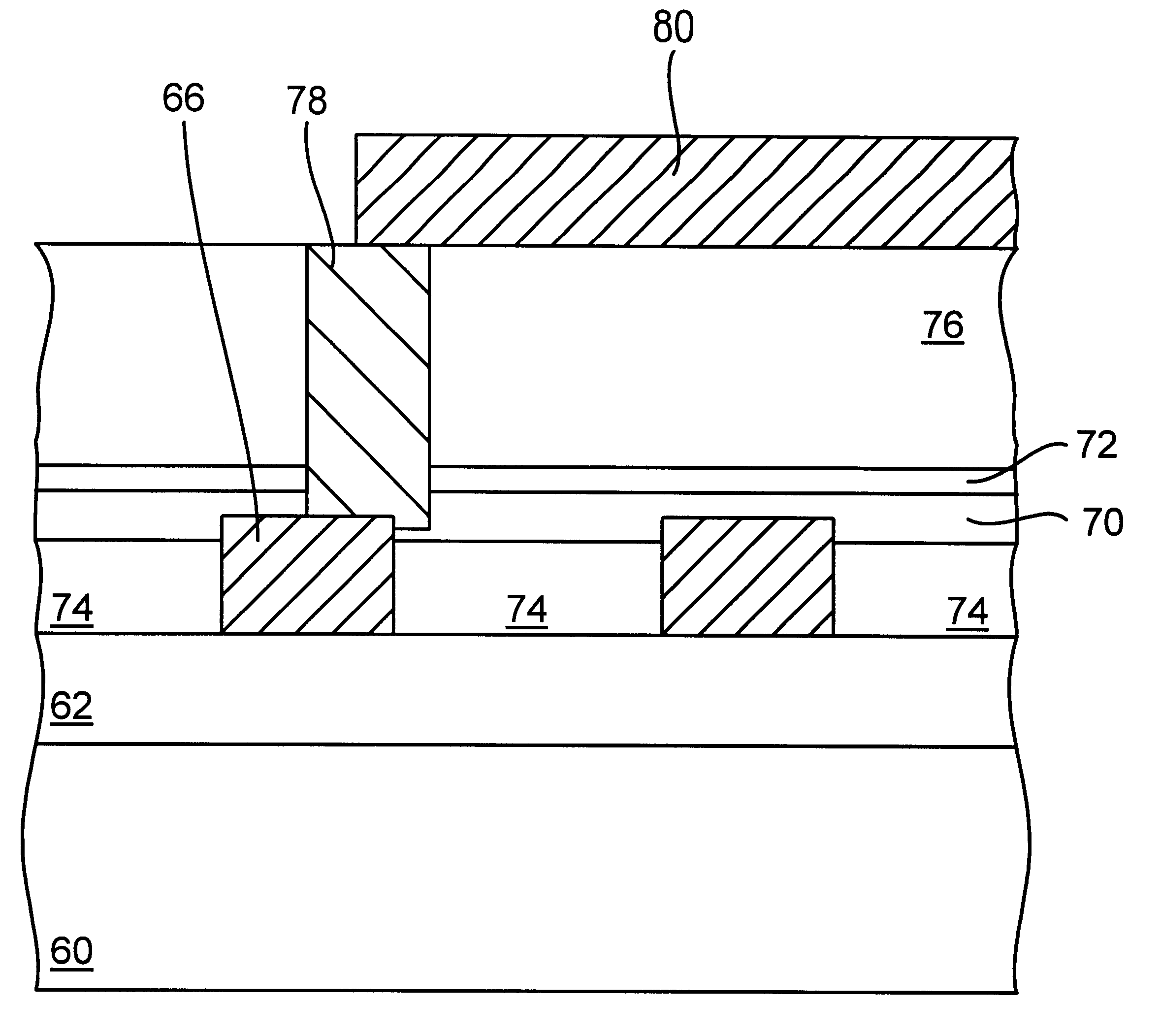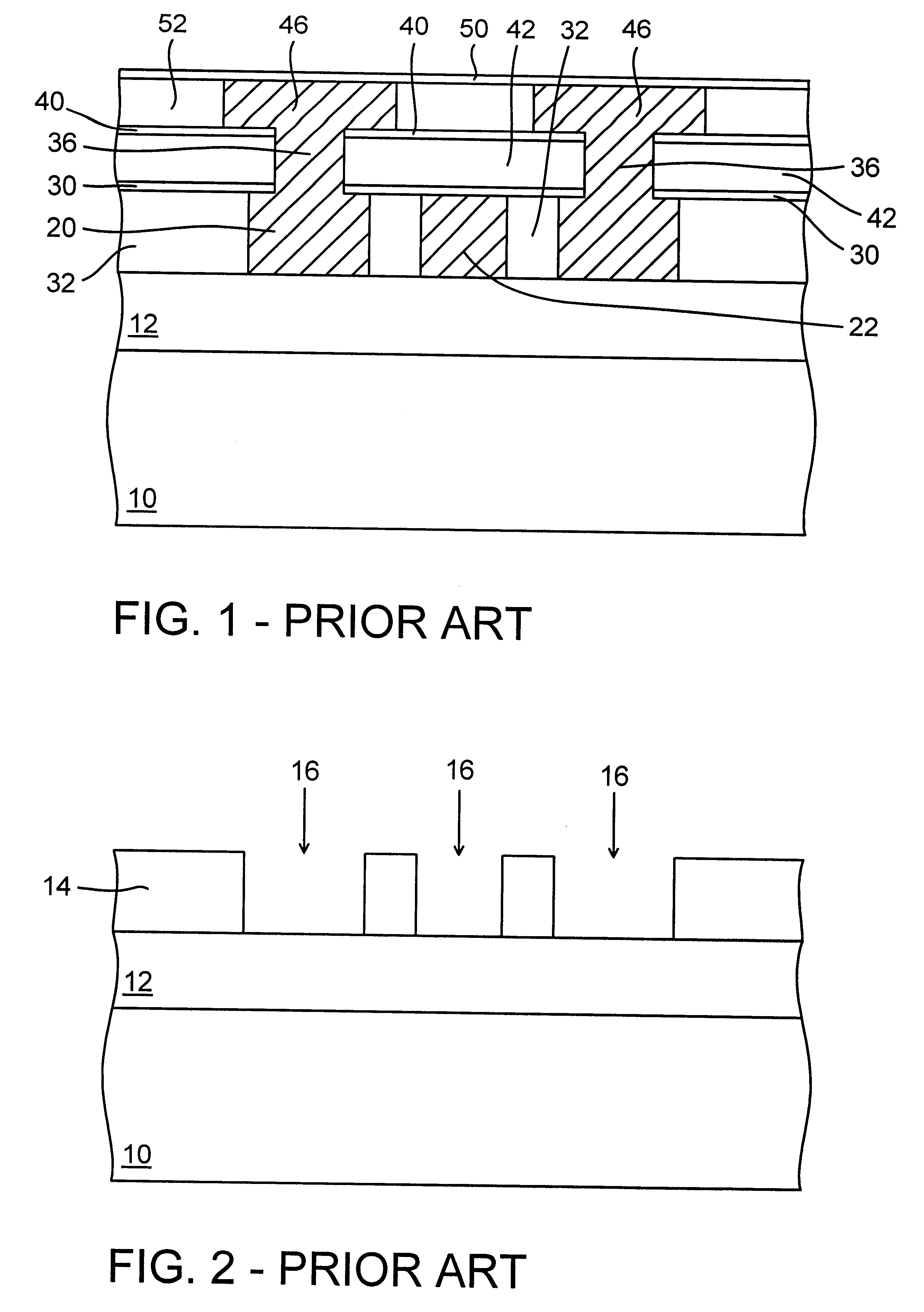Interconnect structure with gas dielectric compatible with unlanded vias
a dielectric and interconnecting structure technology, applied in the direction of basic electric elements, electric apparatus, semiconductor/solid-state device manufacturing, etc., can solve the problems of increasing energy consumption, slow data transmission rate, and undesirable capacitance and inductive coupling of wire lines
- Summary
- Abstract
- Description
- Claims
- Application Information
AI Technical Summary
Problems solved by technology
Method used
Image
Examples
Embodiment Construction
According to one aspect, the present invention forms an integrated circuit device by providing a pattern of wiring lines over an insulating layer, a first wiring line laterally separated from a second wiring line by a layer of sacrificial material. A portion of the layer of sacrificial material is removed to recess an upper surface of the layer of sacrificial material below upper surfaces of the first and second wiring lines. A layer of capping material is provided over the first and second wiring lines and over the recessed upper surface of the layer of sacrificial material. Then, a consumption reaction is performed through the layer of capping material to consume at least a further portion of the layer of sacrificial material, leaving an air dielectric between the first and second wiring lines bounded on an upper surface by the capping layer.
According to another aspect, the present invention forms an integrated circuit device by providing a pattern of wiring lines over an insulati...
PUM
 Login to View More
Login to View More Abstract
Description
Claims
Application Information
 Login to View More
Login to View More - R&D
- Intellectual Property
- Life Sciences
- Materials
- Tech Scout
- Unparalleled Data Quality
- Higher Quality Content
- 60% Fewer Hallucinations
Browse by: Latest US Patents, China's latest patents, Technical Efficacy Thesaurus, Application Domain, Technology Topic, Popular Technical Reports.
© 2025 PatSnap. All rights reserved.Legal|Privacy policy|Modern Slavery Act Transparency Statement|Sitemap|About US| Contact US: help@patsnap.com



